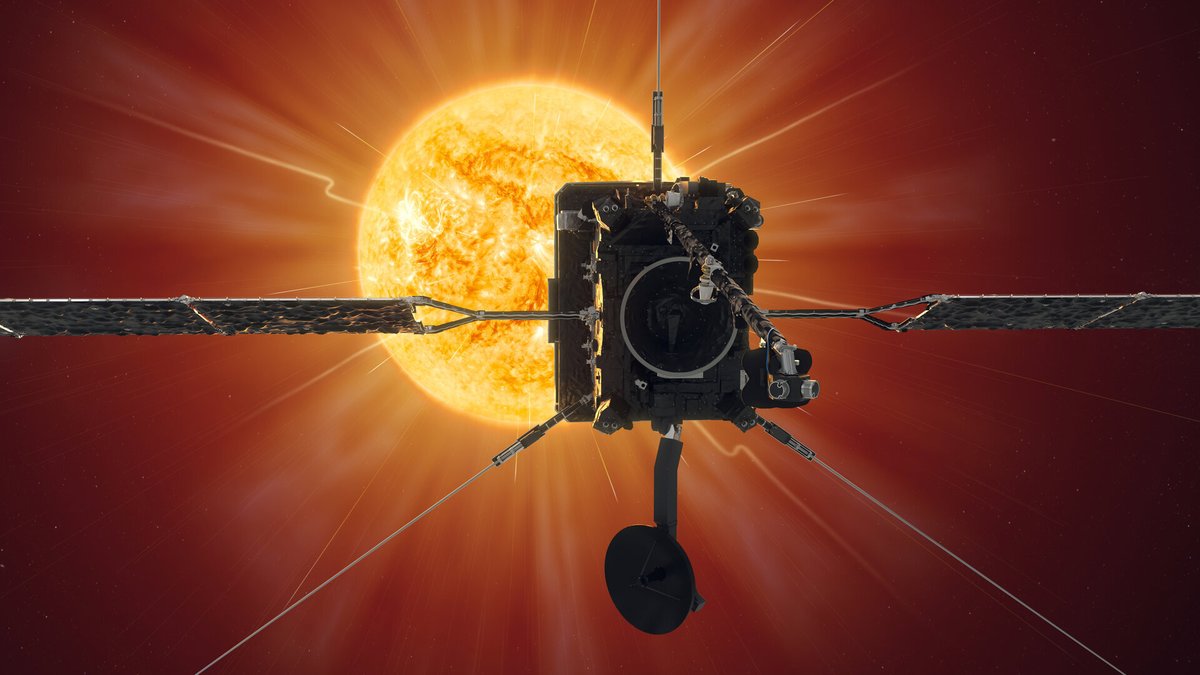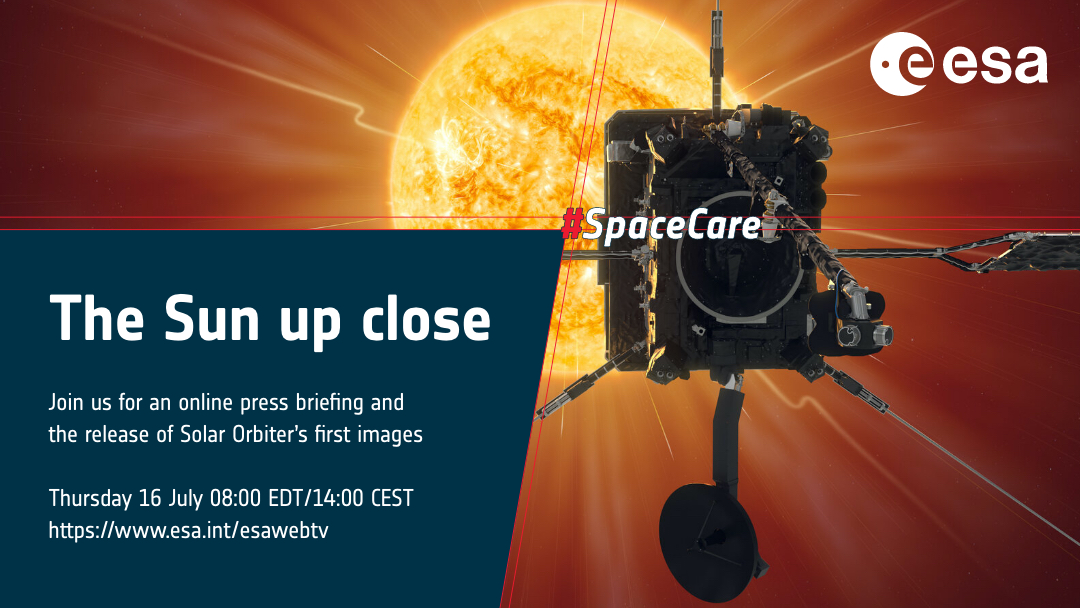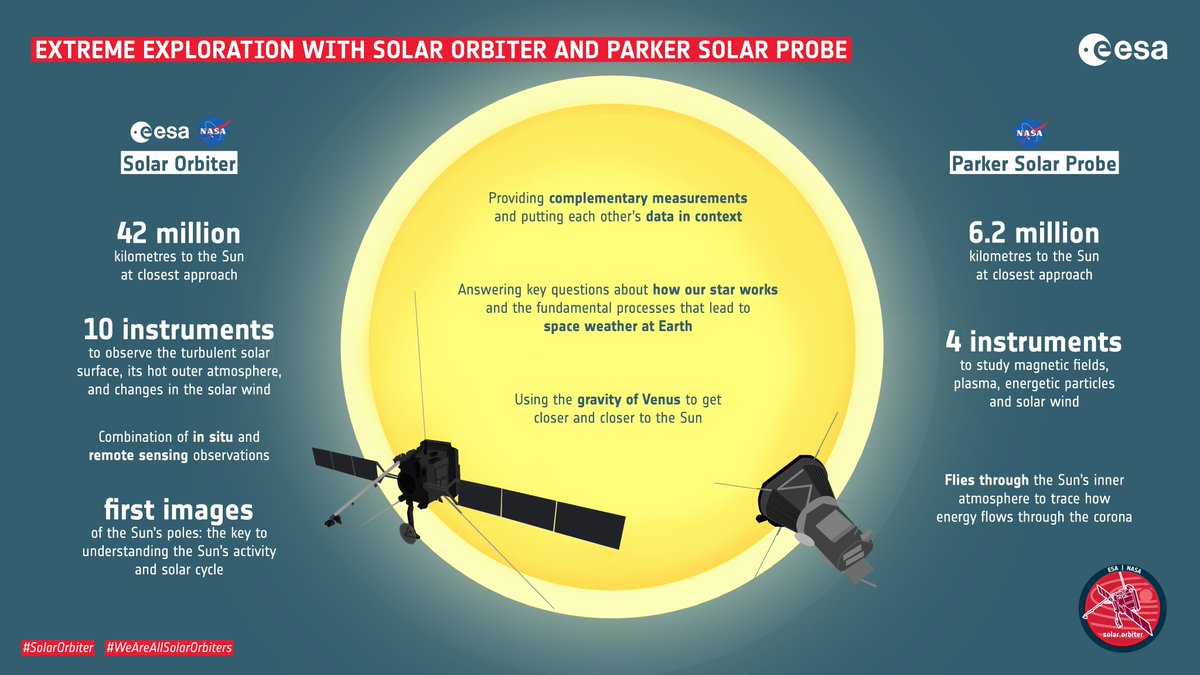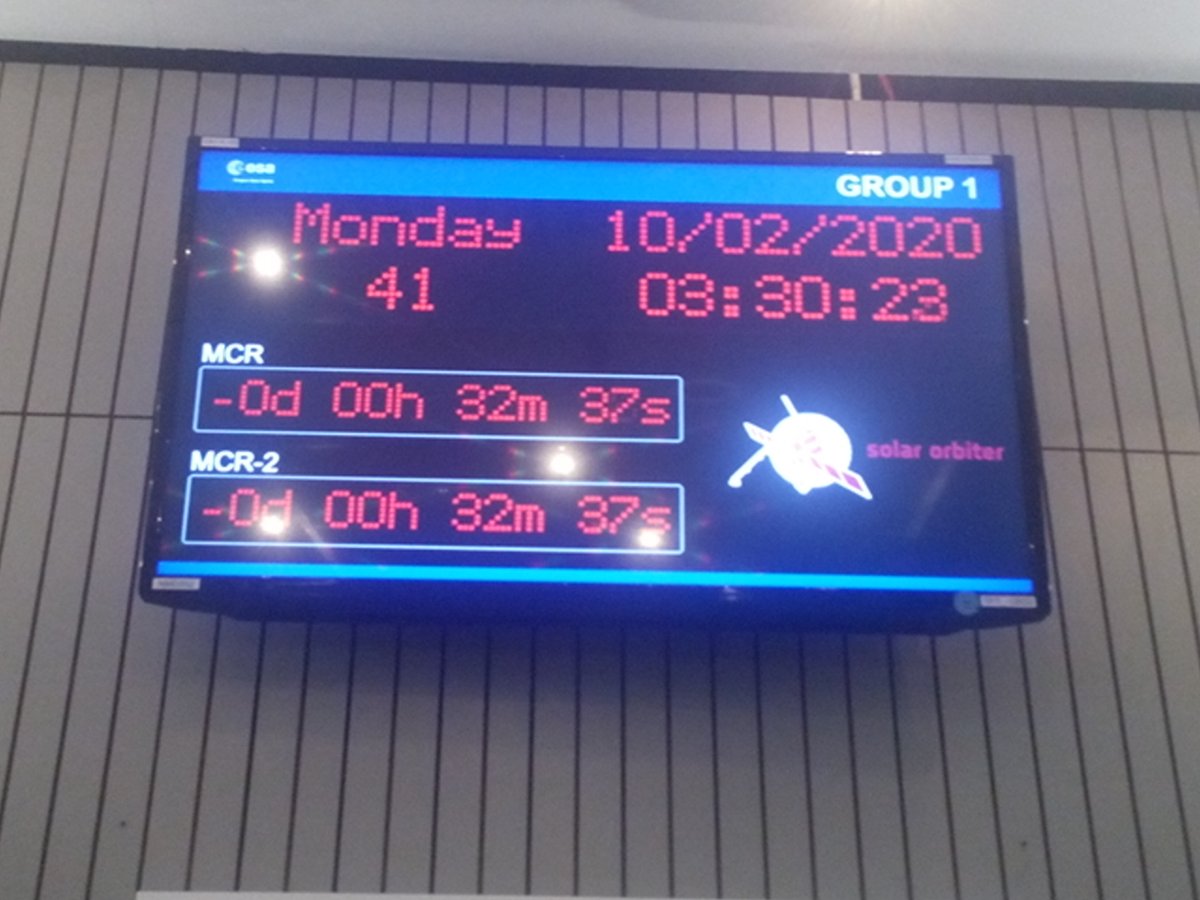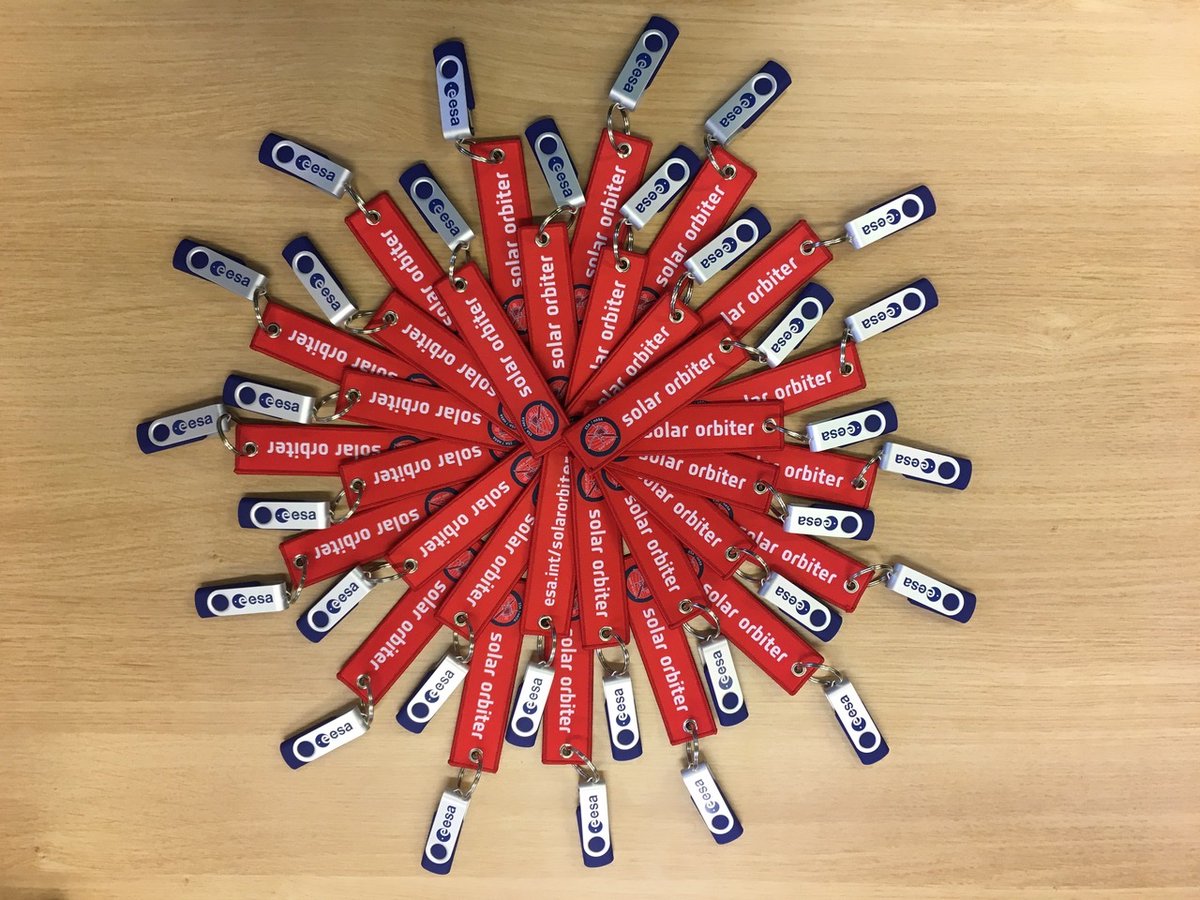Are you ready to see #TheSunUpClose?
CALLING ALL MEDIA: We will reveal the first images taken by #SolarOrbiter, only 77 million km from the surface of the #Sun, during an online press briefing on 16 July 14:00 CEST / 13:00 BST.
👉Details + registration: esa.int/Newsroom/Press…
CALLING ALL MEDIA: We will reveal the first images taken by #SolarOrbiter, only 77 million km from the surface of the #Sun, during an online press briefing on 16 July 14:00 CEST / 13:00 BST.
👉Details + registration: esa.int/Newsroom/Press…
“The first images are exceeding our expectations,” says Daniel Müller, ESA #SolarOrbiter Project Scientist. “We can already see hints of very interesting phenomena that we have not been able to observe in detail before.”
Join us at esa.int/esawebtv
16 July #TheSunUpClose
Join us at esa.int/esawebtv
16 July #TheSunUpClose

👇 The panel of #SolarOrbiter mission scientists and experts who will be presenting these incredible first peeks of #TheSunUpClose 🌞🛰️😎
Don't miss the historic reveal on Thursday 16 July #WeAreAllSolarOrbiters
Don't miss the historic reveal on Thursday 16 July #WeAreAllSolarOrbiters

• • •
Missing some Tweet in this thread? You can try to
force a refresh


